A Culinary Passport: 23 Iconic Sandwiches Worth Crossing Continents For
Last Updated on June 29, 2025 by Amylee Silva
There’s perhaps no better way to understand a culture than through its street food—and nothing tells the story of a place quite like its signature sandwich.
From the bustling markets of Istanbul to the misty cafés of Copenhagen, every corner of the world has perfected the art of layering extraordinary flavors between bread. For the discerning traveler who understands that the most profound discoveries often come wrapped in the humblest packages, these 23 iconic sandwiches represent more than mere sustenance—they’re edible narratives of history, tradition, and innovation.
The Best Sandwiches from Around the World
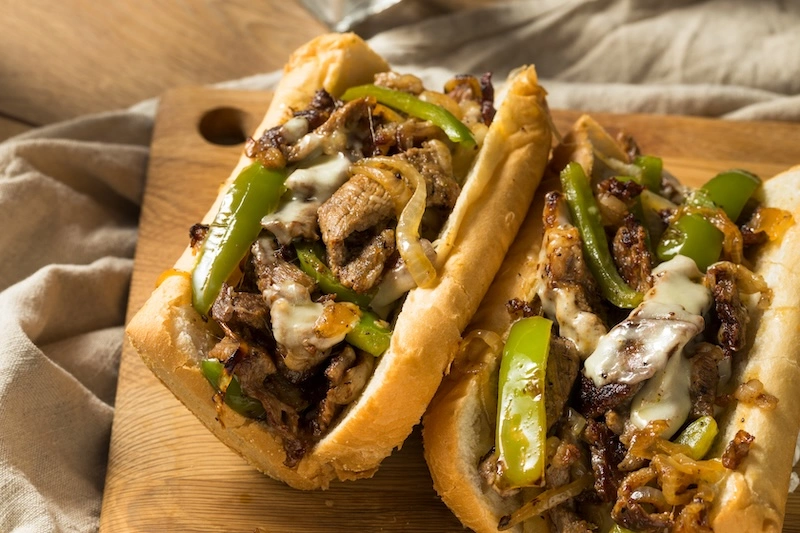
North America
1. Philly Cheesesteak (United States)
In the shadow of the Liberty Bell, Philadelphia has gifted the world perhaps America’s most passionate sandwich debate. Thinly sliced, griddled beef—often ribeye—topped with melted cheese such as provolone or American, and served on a hoagie roll, the Philly cheesesteak is deceptively simple yet endlessly contentious. The ritual of ordering—”wit or wit-out” (onions), “Whiz, American, or provolone”—is as integral to the experience as the sandwich itself. Visit Pat’s or Geno’s for the tourist pilgrimage, but true aficionados know the neighborhood joints often serve the most transcendent versions.
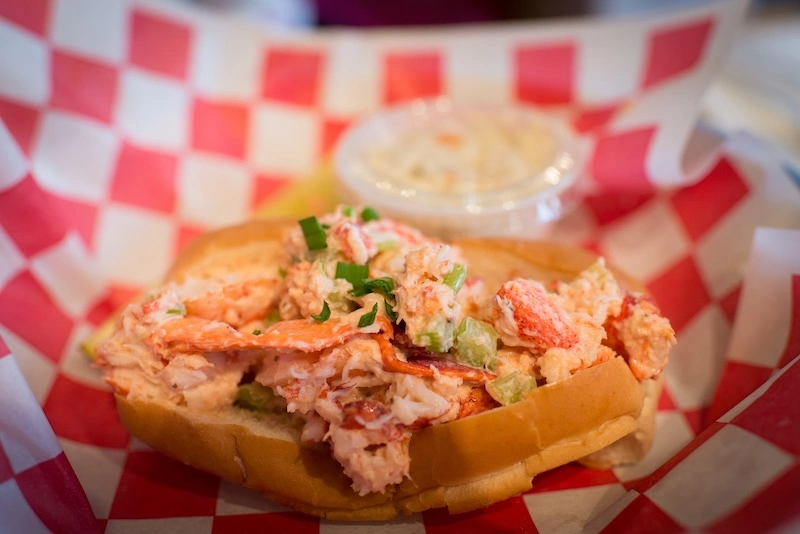
2. Lobster Roll (United States)
A New England classic featuring chunks of fresh lobster meat served in a buttered, split-top bun. It comes in two main styles: Maine-style, where the lobster is lightly dressed in mayonnaise, and Connecticut-style, where it’s served warm with melted butter. This sandwich embodies the aristocratic simplicity that defines New England’s coastal culture—letting premium ingredients speak for themselves with minimal intervention. The debate between hot and cold preparations mirrors the region’s deeply held convictions about tradition and authenticity.
3. Po’ Boy (United States)
Hailing from New Orleans, this sandwich uses a base of French bread roll and is filled with fried seafood—like shrimp, oysters, or catfish—and sometimes roast beef, often dressed with lettuce, tomato, pickles, and mayonnaise. Born during the 1929 streetcar strike when the Martin brothers served free sandwiches to “poor boys,” the po’ boy represents New Orleans’ genius for transforming economic necessity into culinary poetry. The bread must be from New Orleans—crusty outside, impossibly light inside—making authentic po’ boys nearly impossible to replicate elsewhere.
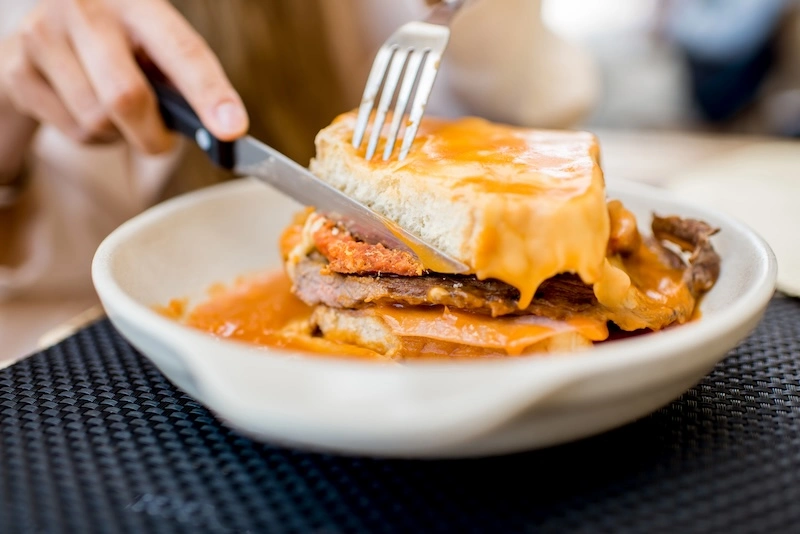
Europe
4. Francesinha (Portugal)
Hailing from Porto, this mighty sandwich isn’t for the faint-hearted. It consists of two thick slices of white bread wedged with ham, sausage, steak and cheese. It’s then covered with melted cheese and a spicy beer and tomato sauce, and topped with a fried egg. Named “little French woman” in Portuguese, the francesinha represents Porto’s audacious approach to comfort food—a beer-soaked love letter to excess that somehow achieves perfect harmony. It’s typically served with a mountain of fries, because in Porto, restraint is not a virtue when it comes to satisfaction.

5. Smørrebrød (Denmark)
The word smørrebrød literally translates to “butter bread” which basically describes the foundation of this iconic Scandinavian dish. Indeed, a slice of bread (most likely rye) slathered with butter is smørrebrød in its simplest form. But this is merely the canvas for Denmark’s national art form. With rye bread as the typical base, toppings include scores (perhaps hundreds) of combinations that range from curried or pickled herring and tiny pink shrimp to sliced boiled eggs and rare roast beef atop a layer of butter. Each creation is a masterpiece of composition, color, and balance—edible proof of the Danish philosophy that even the simplest pleasures deserve careful attention.

6. Croque Monsieur (France)
The Croque Monsieur is a hot sandwich made with ham and cheese, primarily emmental or gruyère, grilled to perfection on brioche-like bread with a béchamel sauce adding a creamy texture. This is France’s sophisticated answer to the grilled cheese—a testament to the nation’s ability to elevate the ordinary into the sublime. When topped with a fried egg, it becomes a Croque Madame, proving that sometimes perfection can indeed be improved upon.
7. Pan Bagnat (France)
If you like a good salade Niçoise, chances are you’ll be a fan of the pan bagnat—a sandwich that similarly hails from Nice in the South of France and is made using crusty pain de campagne. Sliced in half (but not completely through), the bread hinges open to reveal layers of raw vegetables, anchovies, olives, sliced hard boiled eggs, chunks of tuna and liberally applied olive oil, salt and pepper. It’s essentially a salade Niçoise reimagined as a sandwich—the Mediterranean sun captured between two halves of crusty bread.
8. Bocadillo de Tortilla (Spain)
Think of traditional Spanish foods, and you probably think of paella. But arguably the only way to improve upon a well-cooked Spanish tortilla is by stuffing it in a bread roll. A distant cousin to the Mexican guajalota, bocadillos de tortilla will almost certainly become your next sandwich obsession. This chunky hunk of potato and egg deliciousness, served between crusty bread, represents Spain’s mastery of humble ingredients transformed into something transcendent. It’s bar food elevated to an art form.
9. Tramezzino (Italy)
The tramezzino is a triangular Italian sandwich constructed from two slices of soft white bread, with the crusts removed, containing various fillings like hard boiled egg and tuna fish, or more elaborate combinations. Similar to English tea sandwiches, these flavorful triangular sandwiches are made with crustless soft white bread and homemade mayonnaise. They’re typically served and sold between breakfast and lunch at many restaurants and bars in Venice, Italy. These petite Venetian snacks represent Italy’s gift for making even the simplest preparations feel sophisticated and intentional.

Asia
10. Katsu Sando (Japan)
A katsu sando features a crispy, breaded pork or chicken cutlet (katsu), thinly sliced green cabbage, and kewpie mayo nestled between soft, fluffy shokupan (milk bread), often with a drizzle of tangy tonkatsu sauce. This is Japan’s contribution to the global sandwich canon—a study in textural perfection where the impossibly soft milk bread contrasts with the shatteringly crisp cutlet. It embodies the Japanese principle of kaizen: the pursuit of perfection through continuous refinement.

11. Bánh Mì (Vietnam)
The French colonial occupation brought the baguette to Vietnam and its subsequent transformation favoured the birth of this typical and decidedly unique sandwich. A fusion of French and Vietnamese cuisine, this sandwich features a crusty baguette filled with pickled vegetables, fresh vegetables, cilantro, chili, pâté, and various meats like pork, chicken, or tofu. The bánh mì is culinary diplomacy at its finest—a delicious reminder that the most meaningful cultural exchanges often happen at street level, one bite at a time.
12. Vada Pav (India)
India’s street food favorite, the affordable and filling vada pav, proves that meat is not an essential sandwich component. A spiced potato dumpling (vada) is served between soft bread rolls (pav) with various chutneys and fried green chilies. Born on the streets of Mumbai in the 1960s, this “Indian burger” democratized fine dining by making satisfying, flavorful food accessible to everyone. It’s street food that feeds both body and spirit, embodying Mumbai’s relentless energy and ingenuity.
13. Kati Roll (India)
Kolkata’s famous street food—spiced meat or vegetables wrapped in paratha bread—represents Bengal’s genius for portable cuisine. The flaky, buttered paratha cradles succulent kebabs, fresh onions, and tangy chutneys, creating a perfect handheld meal that captures the essence of this cultural capital. Born on the streets near the city’s office districts, kati rolls transformed the lunch break into a culinary adventure, proving that the best innovations often come from practical necessity.
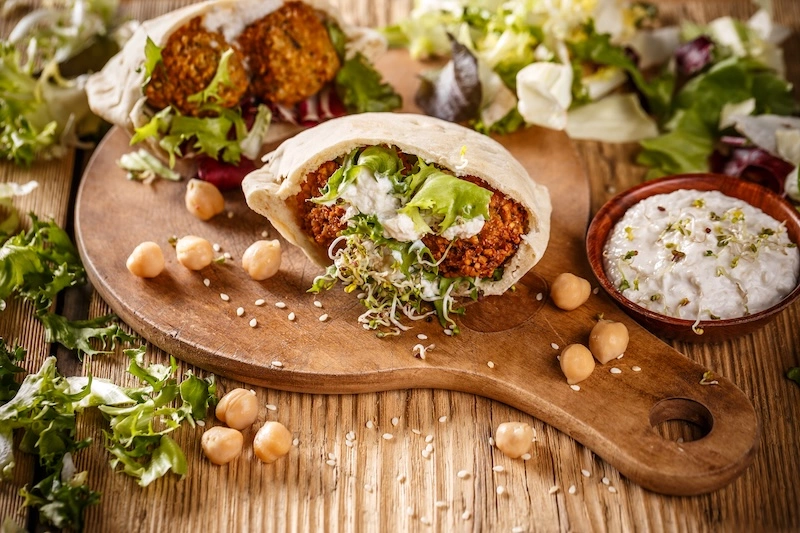
Middle East & North Africa
14. Shawarma (Lebanon/Middle East)
Shawarma’s name comes from the Arabic word for “turning”—a reference to how this favorite Middle Eastern sandwich’s meaty filling cooks on a vertical spit. While there are many variations of this popular street food, its base is grilled spiced meat (usually chicken, lamb or beef) shaved from the rotisserie and tucked into a light sleeve of pita bread, topped with things such as tomatoes, onions and parsley and perhaps tahini sauce and hot sauce, too. The sight of the rotating spit, the sound of the knife shaving meat, the aroma of spices—shawarma engages all the senses before the first bite.
15. Falafel Pita (Egypt/Middle East)
Egypt’s national sandwich is definitely one of the most flavorful and colorful dishes on any list. Chickpeas are ground up with finely chopped onions, fresh herbs, and Middle Eastern spices, shaped into balls and deep-fried to golden perfection. The fried falafel balls are then stuffed into a warm pita and served with a variety of fillings, from traditional shepherd’s salad to unusual brightly colored pickles like hot pink turnips and deep red beets. It’s vegetarian food that never apologizes for being meatless—bold, satisfying, and utterly complete.
16. Msemen Khlii (Morocco)
Msemen is a flaky, layered flatbread found across Morocco, often grilled and stuffed with khlii—Moroccan preserved spiced meat, usually beef or lamb confit. Sold hot on the street and folded like a sandwich, it oozes fragrant fat and spices with every bite. This is true local fast food: deeply Moroccan, hearty, portable, and utterly satisfying. The contrast between the crispy, buttery layers of msemen and the rich, intensely flavored khlii creates a perfect handheld meal that captures the essence of Moroccan street culture. It’s the kind of discovery that makes wandering through the medina’s winding alleys so rewarding.
South America
17. Chivito (Uruguay)
Invented in a Uruguayan bar, the chivito (little goat) is now the country’s national dish and, according to Uruguayans, their most famous culinary export. However, while the name implies that goat meat makes some kind of appearance, the proteins of choice are actually beef, bacon, and ham, complemented by mozzarella, lettuce, tomato, and hard-boiled eggs. Despite its name, this sandwich is pure beef indulgence—Uruguay’s carnivorous culture distilled into one magnificent creation.
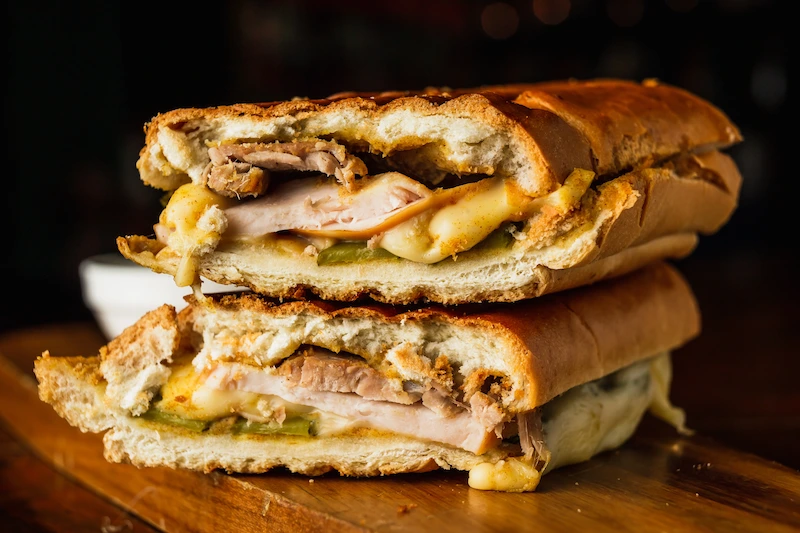
18. Medianoche (Cuba)
Translating to “midnight” in Spanish, a medianoche is perfect for a late night snack, and is similar to the Cuban sandwich (Cubano). Instead, it’s made with a slightly sweet, soft egg-based bread instead of crusty Cuban bread, and typically filled with roast pork, ham, Swiss cheese, pickles, and mustard, then pressed until warm and crispy. This is Cuba’s after-hours answer to hunger—a pressed sandwich that captures the island’s blend of Spanish, Caribbean, and immigrant influences in every warm, melted bite.
19. Choripán (Argentina)
Also popular in many other South American countries, this sandwich features a grilled chorizo sausage served in a crusty bread roll, like a baguette or pan batido. Often served with chimichurri, this is Argentina’s contribution to the global canon of simple perfection. Born at asados (barbecues) across the pampas, the choripán represents the Argentine philosophy that the best food comes from the marriage of quality ingredients and fire. It’s gaucho cuisine distilled to its essence.
Asia-Pacific
20. Pan de Sal Sandwich (Philippines)
The Philippines’ national bread, pan de sal, serves as the foundation for countless sandwich variations throughout the archipelago. This slightly sweet, pillowy roll—a legacy of Spanish colonization adapted to local tastes—becomes a canvas for everything from simple cheese and ham to more elaborate combinations featuring local ingredients like kesong puto or longganisa. It’s breakfast democracy in action, affordable enough for daily consumption yet versatile enough to accommodate any filling, embodying the Filipino talent for making the imported feel indigenous.
Africa
21. Gatsby (South Africa)
A Gatsby is a South African submarine sandwich consisting of a bread roll filled with chips (French fries) and a choice of fillings and sauces. It originated in Cape Town and is popular throughout the Western Cape province. The sandwich is typically large and shared by several people. Named after F. Scott Fitzgerald’s literary masterpiece, this working-class hero is anything but elegant—and that’s precisely its charm. It’s democracy in sandwich form, meant to be shared and capable of feeding a small crowd.
Oceania & Caucasus
22. Vegemite on Toast (Australia)
The Vegemite sandwich—dark, salty yeast extract spread thin on buttered white bread—is Australia’s most polarizing culinary export. For Australians, it’s childhood distilled into edible form, a rite of passage as essential as learning to swim. For everyone else, it’s an acquired taste that may never be acquired. But that’s precisely what makes it perfect: it’s uncompromisingly Australian, requiring no explanation or apology. Like the country itself, it’s an experience that either converts you completely or leaves you bewildered, but never indifferent.
23. Khachapuri (Georgia)
Khachapuri is what you’d get if a pizza and grilled cheese sandwich had a child. This boat-shaped flatbread from Georgia is filled with sulguni and imeruli cheeses and baked until the crust is golden. Some culinary historians suggest khachapuri’s roots may stretch back to the 12th century, possibly influenced by early Mediterranean flatbreads introduced through trade along the Black Sea. The most indulgent version is adjaruli khachapuri, served with a partially set egg and a stick of melted butter on top. You tear off chunks and dip them in the gooey center—a ritual that transforms eating into ceremony, proving that Georgian hospitality extends even to their bread.
The Universal Language of Layers
What connects a laboriously assembled smørrebrød in Copenhagen to a hastily grabbed bánh mì in Ho Chi Minh City is more than convenience—it’s the human instinct to create something greater than the sum of its parts. Each of these sandwiches represents a culture’s answer to the fundamental question: How do we turn simple ingredients into something that nourishes both body and soul?
For the thoughtful traveler, seeking out these iconic sandwiches isn’t merely about ticking items off a culinary bucket list. It’s about understanding that the best travel experiences often come not from Michelin-starred temples to gastronomy, but from standing shoulder-to-shoulder with locals at a street cart, sauce dripping down your fingers, discovering that the most profound connections happen over shared meals and shared stories.
After all, there’s something beautifully democratic about a sandwich—it’s food that demands to be eaten with your hands, that refuses to be formal, that insists on being approachable. In a world that often feels increasingly divided, perhaps there’s wisdom in the sandwich: the understanding that the best things happen when different elements come together, when boundaries dissolve, and when we’re reminded that some of life’s greatest pleasures are also its simplest.
Ready to embark on your own culinary journey? Each of these sandwiches represents not just a destination, but an experience waiting to be savored. Pack your appetite for adventure—and perhaps an extra napkin or two.







